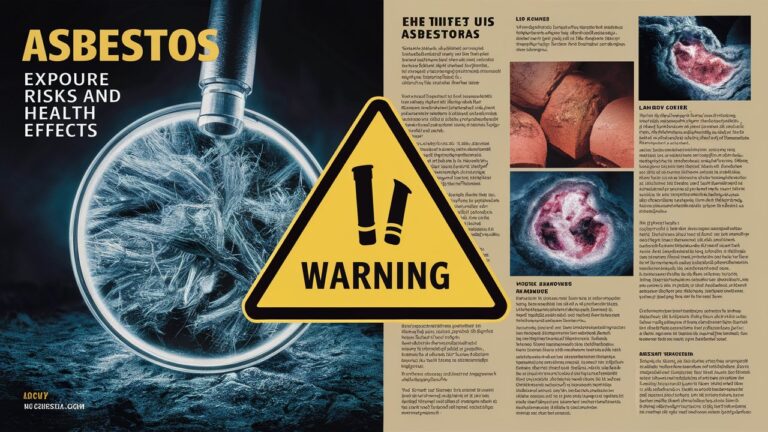Introduction
Asbestos, a naturally occurring fibrous mineral once celebrated for its heat resistance and durability, now bears a notorious reputation as a serious public health hazard. Although its use has plummeted due to growing awareness about its links to deadly diseases, many older structures still harbor asbestos—and exposure risks remain significant. This comprehensive guide unfolds what asbestos is, the health consequences of exposure, the regulations governing its use and removal, and how you can stay safe or ensure compliance. Diving deep into each facet, the aim is to shed light on this dangerous mineral and empower readers with actionable insight.
Main Body (in rich, detailed sections)
1. What Is Asbestos—Types & Historical Use
Asbestos refers to six fibrous silica-based minerals known for their durability, heat resistance, and insulating properties. The most common form, chrysotile (white asbestos), once dominated the market—used in flooring, roofing shingles, pipe insulation, and even brake linings Wikipedia. Archaeological findings trace its usage back to the Stone Age, but mass production took off in the late 19th century, supplying fire-proofing and building materials globally until the 1970s when its health risks began surfacing Wikipedia.
2. Health Effects & Exposure Risks
Every type of asbestos fiber—including chrysotile—has been definitively classified as carcinogenic by WHO, linked to cancers of the lung, larynx, ovaries, and mesothelioma, as well as chronic respiratory illnesses like asbestosis World Health OrganizationWikipedia. There is no known safe level of exposure: even short-term exposure has resulted in mesothelioma Wikipedia. Exposure typically occurs when asbestos-containing materials are disturbed—during renovations, demolitions, or weathered decay—releasing fine fibers into the air US EPAWashington State Department of Health.
3. Regulatory Landscape & Legal Considerations
Many countries have implemented total asbestos bans; around 66–68 territories now prohibit all uses of asbestos Wikipedia+1. In the U.S., the EPA’s 2024 rule initiates a phased ban on chrysotile asbestos, especially targeting uses in chlor-alkali production and brake/gasket materials, with full eradication expected by 2037 AP News. OSHA, EPA, and other federal bodies have introduced multiple regulations and oversight—ranging from school hazard abatement to worker protection protocols US EPAOSHA. In the UK, the Control of Asbestos Regulations 2006 prohibits asbestos import and supply and mandates training for any worker likely to encounter it Wikipedia.
4. Handling, Removal & Best Practices
Removing asbestos is complex and should only be performed by certified professionals. Attempting removal without proper safeguards may increase fiber release and health risk U.S. Consumer Product Safety CommissionMesothelioma Center. Professionals follow strict protocols: containment, negative air-pressure, protective gear, signage, and adherence to local regulations Mesothelioma CenterWikipedia. Building owners are responsible for ensuring contractors are licensed, insured, trained, and properly equipped Wikipedia.
5. Managing Asbestos in Existing Structures
For older buildings, management—not always immediate removal—can be the safest strategy. Conducting surveys—pre-purchase, management, or pre-renovation—helps identify asbestos-containing materials (ACMs) and the risk of disturbance The Entourage. Transparent communication with occupants and stakeholders is key when asbestos is present, to build trust and ensure safety measures are understood The Entourage.
Conclusion
Asbestos remains a hidden but deadly hazard in many older structures, with no safe threshold for exposure. From its varied mineral forms and historical prevalence to the grave health risks and evolving global regulations, understanding asbestos is essential. Whether you’re a homeowner, landlord, or project manager, knowing when and how to act—or seek expert help—could mean protecting lives. Vigilance, compliance, and professional oversight are your best defenses against the dangers of asbestos.
Frequently Asked Questions (FAQ)
Q1: What diseases does asbestos exposure cause?
Exposure can lead to mesothelioma, lung cancer, asbestosis, and cancers of the larynx and ovaries World Health Organization.
Q2: Is there a safe level of asbestos exposure?
No. OSHA states that even minimal exposures may contribute to serious disease, and no safe threshold is known Wikipedia.
Q3: Who regulates asbestos?
In the U.S., the EPA, OSHA, CPSC, and other agencies establish laws and enforcement. Other countries have parallel frameworks—a notable example being the UK’s Control of Asbestos Regulations 2006 US EPAOSHAWikipedia.
Q4: Can I remove asbestos myself?
No. Only trained, licensed professionals should remove asbestos. DIY removal is dangerous and illegal in many areas U.S. Consumer Product Safety CommissionMesothelioma Center.
Q5: What should I do if my building contains asbestos?
Have a qualified inspection or survey conducted. If asbestos is intact and undisturbed, management may be acceptable. If removal is necessary, hire certified professionals and ensure full compliance with safety protocols The EntourageWikipedia.
